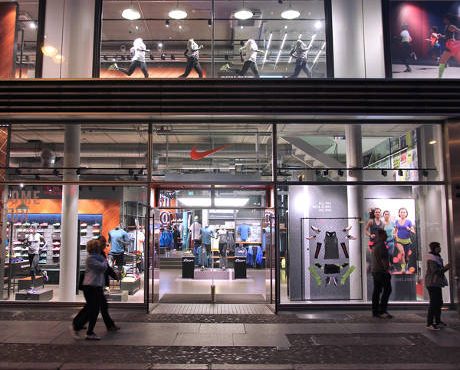Nike Stock Is Still a Top Dividend Pick
Nike Inc (NYSE:NKE) stock is not usually considered a staple for income investors, and there is a good reason why: the company makes athletic apparel and footwear. Because while it’s great at what it does, Nike stock belongs to the consumer discretionary sector, meaning the company makes products that are considered nonessential by consumers.
That’s why Nike stock doesn’t get much attention from dividend investors. Adding in its not-so-handsome 1.27% dividend yield, why should you even bother looking at the company?
Well, while Nike might not be recession-proof in theory, it did survive the last one in great shape. The Greatest Recession towards the end of the last decade was considered the largest economic downturn since the Great Depression. And indeed, many companies—including large corporations—saw their business deteriorate, with some closing down altogether. As a result, quite a few dividend-paying companies trimmed their payout to shareholders.
Not at Nike, though. Despite not being a recession-proof dividend giant like Procter & Gamble Co (NYSE:PG) or Johnson & Johnson (NYSE:JNJ), Nike stock did not cut its dividends during the Great Recession. As a matter of fact, the company actually raised its payout when everything else was deep in the doldrums. Its 8.6% dividend hike in November 2008 is a testament to Nike stock’s dividend strength.
Over the past 10 years, Nike stock’s quarterly dividend rate has increased by 310%. That’s a compound annual growth rate of 15%!
And if you are wondering whether Nike stock’s dividend hikes might be too aggressive, don’t worry. In the company’s fiscal 2016, which ended May 31, 2016, Nike generated $2.16 of earnings per share while declaring $0.62 of dividends per share, so the company was paying out just 28.7% of its earnings. (Source: “Nike, Inc. Consolidated Statements of Income,” Nike Inc, last accessed November 7, 2016.)
Nike stock’s impressive track record of dividends reflects the company’s dominance in its business. For instance, Nike has an around-60% share in the U.S. athletic footwear market. In the basketball segment, the biggest one in the footwear industry, Nike’s share is at a whopping 96%. Competitors such as Under Armour Inc (NYSE:UA) and Adidas AG could only dream about those numbers. (Source: “Why Under Armour’s New NBA Deal Is So Important For The Company,” Forbes, September 3, 2016.)
Despite being the most dominant player in its business, Nike is not standing still. In the first quarter of the company’s fiscal 2017, which ended August 31, 2016, revenue grew eight percent year-over-year to $9.1 billion and would have grown by 10% under constant currency. Earnings came in at $0.73 per share, a nine-percent increase from the year-ago period. (Source: “Nike, Inc. Reports Fiscal 2017 First Quarter Results,” Nike Inc, September 27, 2016.)
Futures orders improved as well. According to the earnings report, worldwide futures orders for Nike-brand athletic footwear and apparel scheduled for delivery from September 2016 to January 2017 was $12.3 billion by the end of August, a seven-percent increase year-over-year on a currency-neutral basis.
The best part is that dividend investors might have another dividend hike to look forward to; the company last raised its quarterly dividend rate in November of 2015. Given how business has been going and its low payout ratio, I wouldn’t be surprised if Nike announces another dividend hike in the coming weeks.
And don’t forget, paying dividends is just one way for Nike to reward its investors, as the company is also buying back its shares aggressively. Last year, Nike announced a new four-year, $12.0-billion share repurchase program. By the end of August, Nike has completed approximately $1.1 billion of the program.
The Bottom Line on NKE Stock
Of course, despite achieving solid growth, Nike is not the fastest-growing company in the industry; Under Armour’s business has expanded even faster. But UA stock does not pay a dividend, and with a 45 times price-to-earnings multiple, Under Armour stock is about twice as expensive as Nike.
The bottom line is that in an industry that’s not considered recession-proof, Nike stock offers solid dividends and growth potential.
